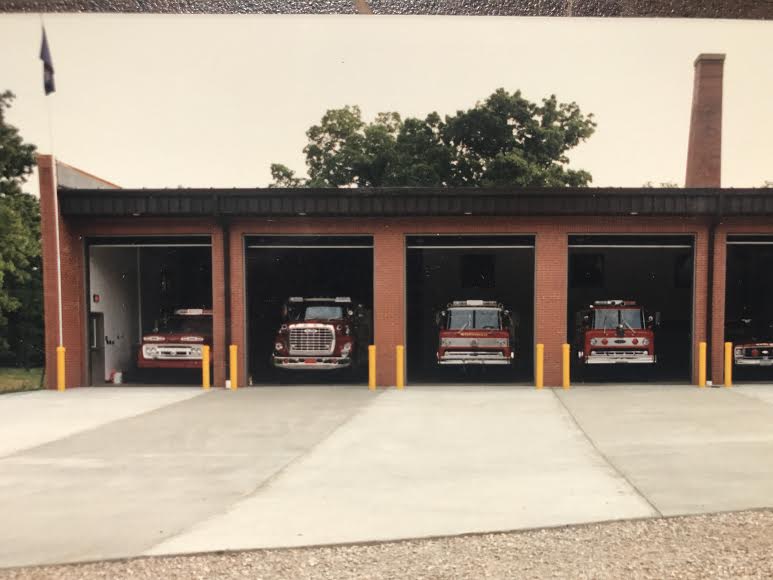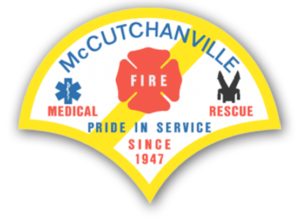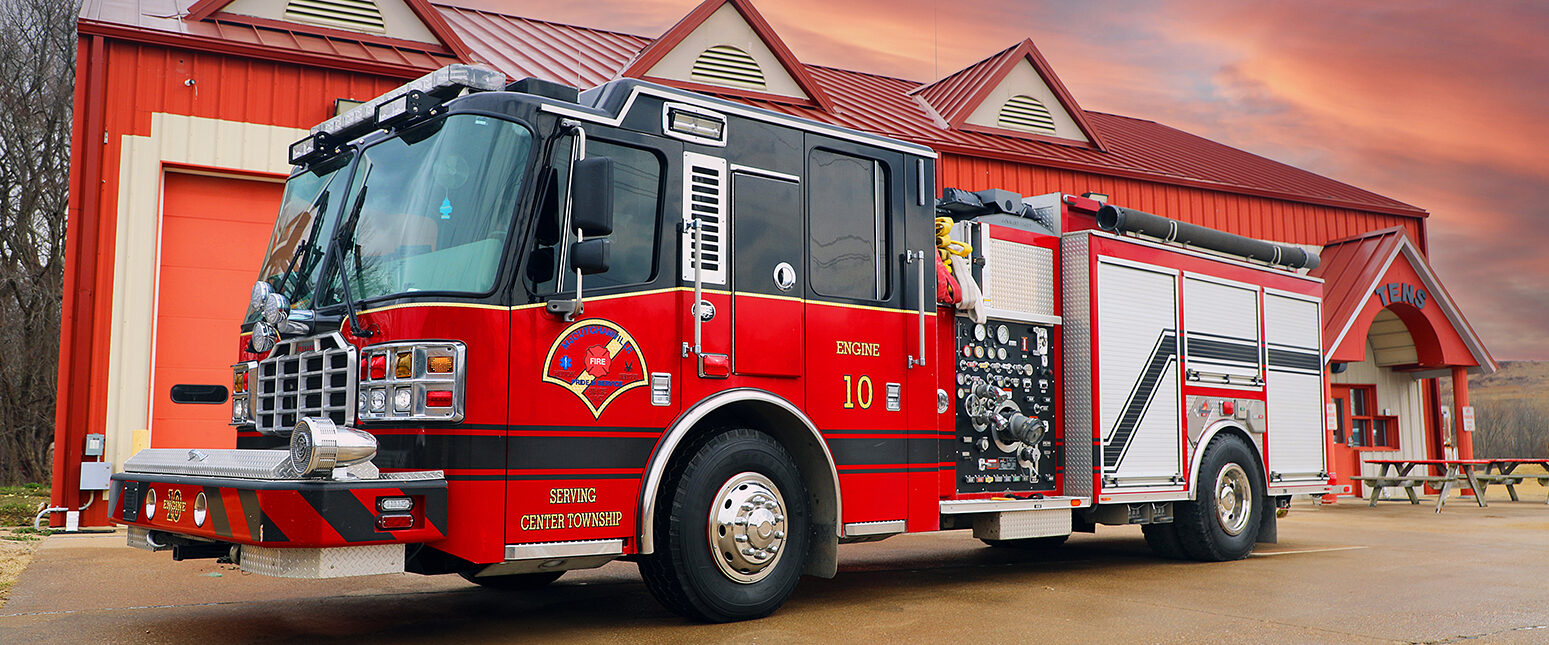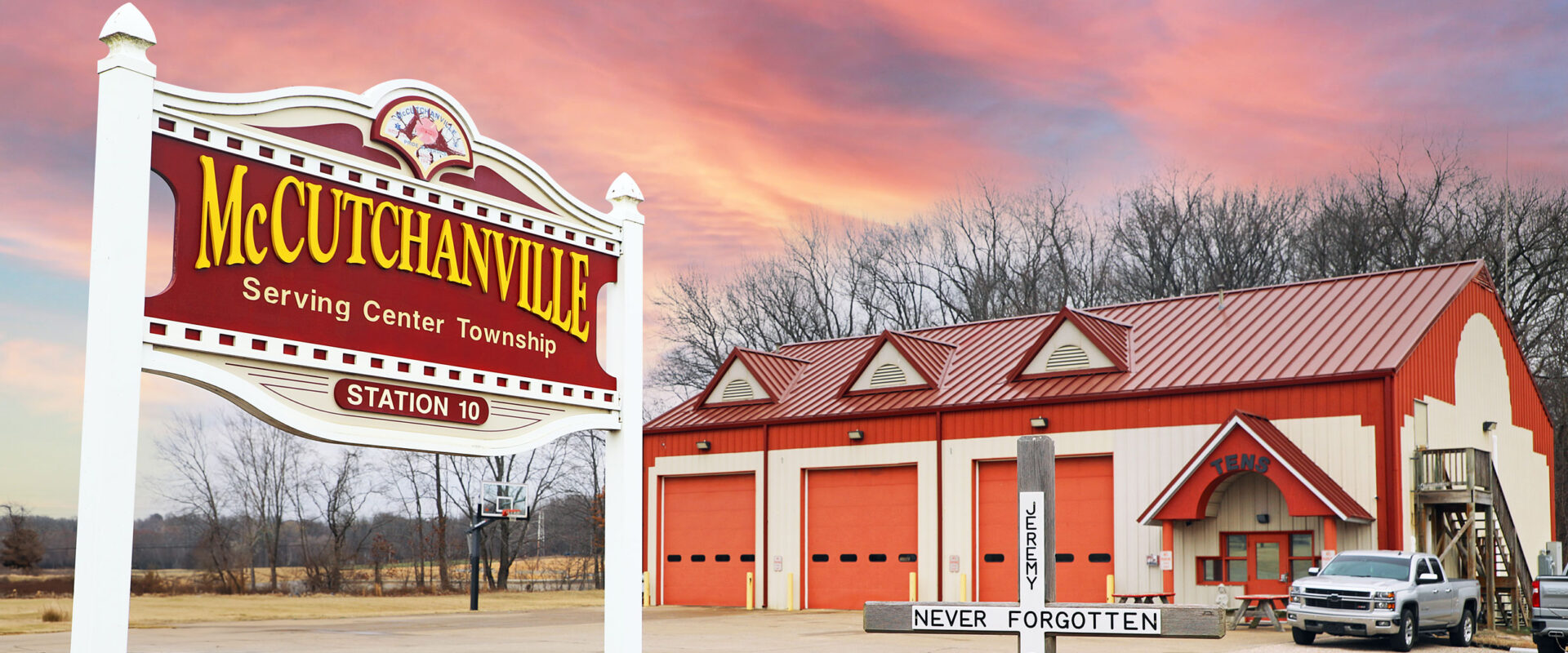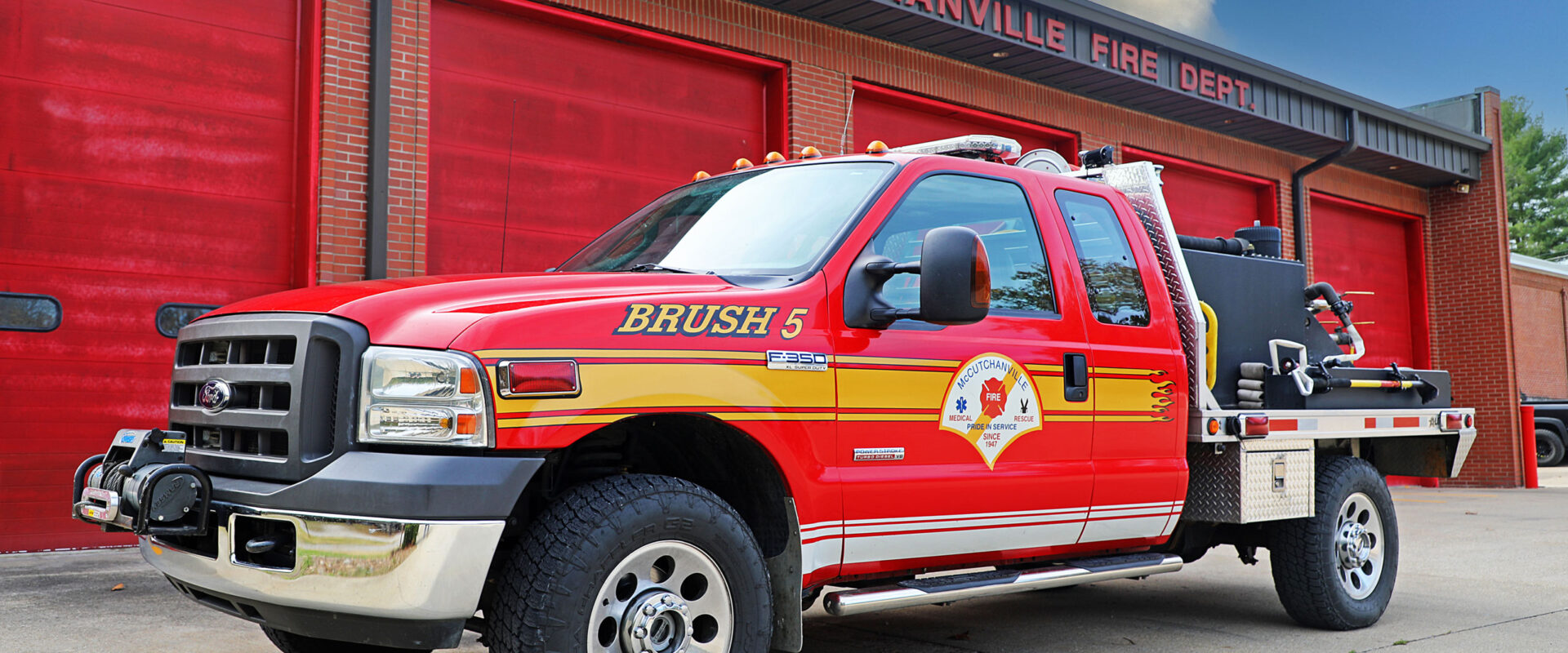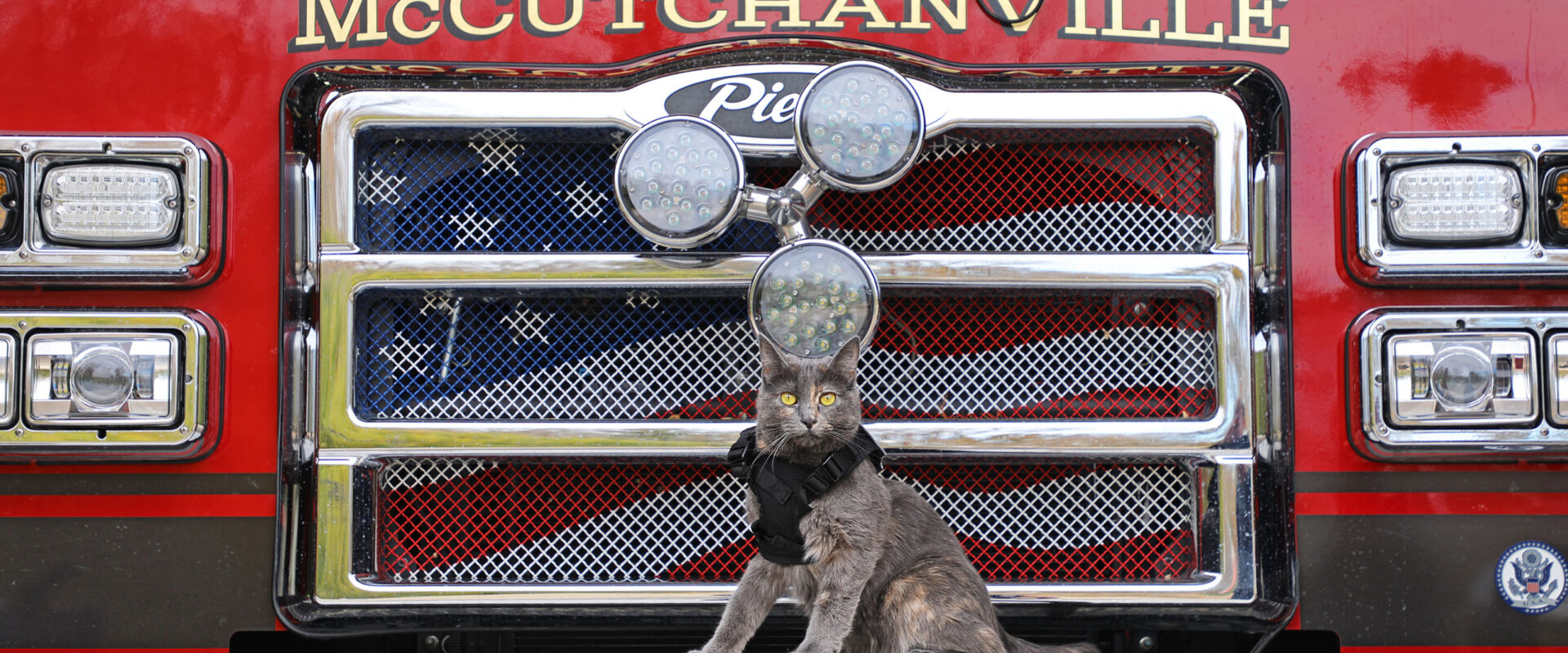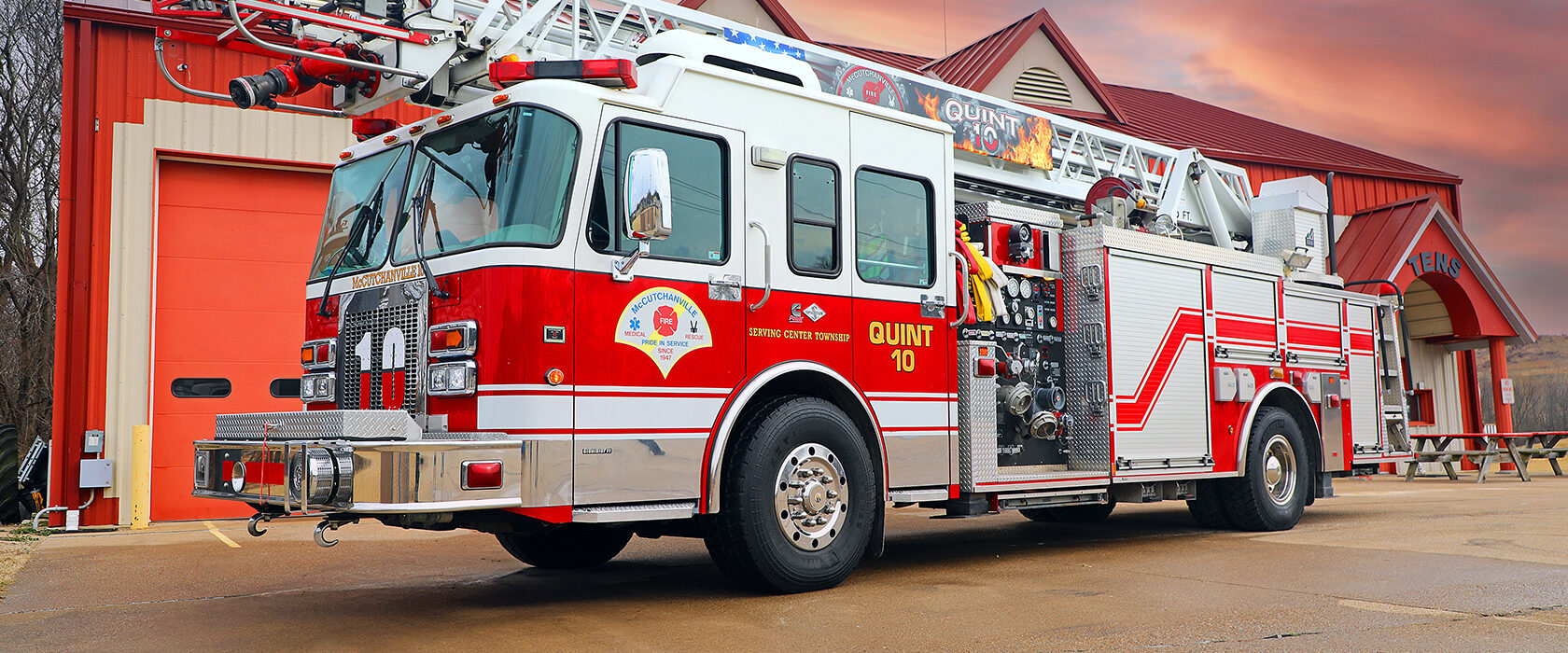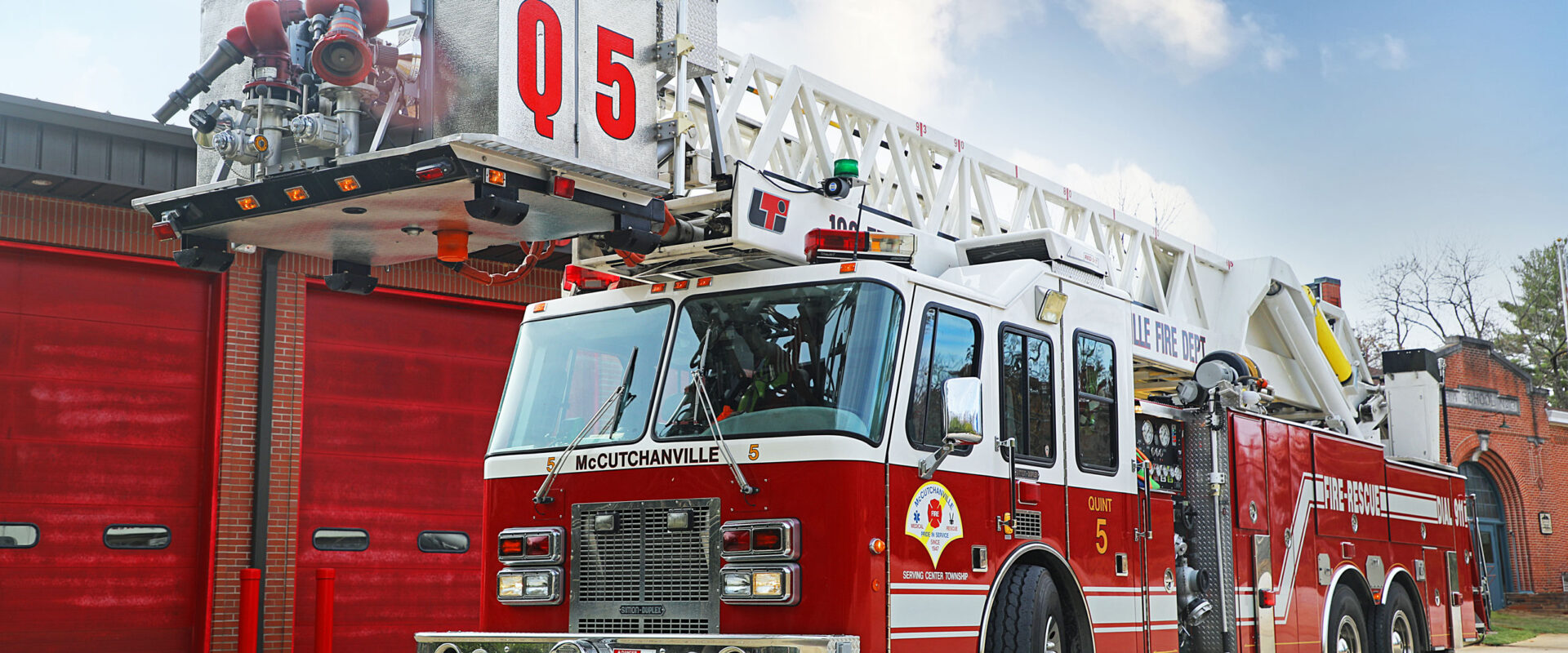For Emergencies Please Call 911
McCutchanville Schools
By 1833 there were enough families with children within a radius of 5 miles to make it necessary to build a schoolhouse. The best description there is of the first educational center is found in a ppaper written by MRs. Mary Perry Johns. Mrs. John’s description is perhaps fairly accurate, because she had gather her information from several people still living then who had attended that first school.
It was built in the woods opposite the house where R.R. Henry now lives, which is on the main north and south highway [9402 Petersburg Rd]. It comprised one room 18 x 20 feet, nestling against big trees in the background, while in front of it a clearing was made for a playground. This school had one six-pained window set high from the ground in the end; in the side was a great wooden door hung on wooden pegs for hinges. It was fastened with a good stout wooden latch, which was raised and lowered with a rawhide string. The floor was made of rude puncheons fitted roughly together. The desks were fastened to the walls on three sides of the room. In front of these desk were a row of rough puncheons. Two holes were bored in either end and split sticks were inserted for legs. These legs served a double purpose, first as a support for the bench and second, as a hammer for the boys. The boys with pockets full of hickory nuts pulled out a leg and proceeded to while away the time and appease their appetites at the same time.
In on end of this building a round log was fastened to the sides extending across the room about three feet from the floor and same distance from the end wall. On the middle of this was built the stick chimney. A space of dirt floor had been left, and on this floor directly under the chimney the fire was built. When conditions were favorable, the smoke went up the chimney; otherwise it circulated freely through the room.
Upon entering the room, many a morning it was not unusual to find great heaps of dirt thrown upon the floor from some burrowing animal. However, that was a small matter, for regular sweeping of the school room was an unheard of performance. When it was swept a broom of buck brush was used. That is, a stout stick, one end of which was securely tied with very fine twigs. With this broom the floor was scratched over occasionally.
After the school room was completed they looked about for someone as a teacher, and in 1834 Alexander McCutchan, second son of the pioneers, William and Mary McCutchan, became the first teacher in the community. It was a subscription school, and as a salary he received thirty cents a month from each pupil. As he was married, he lived in the neighborhood, therefor did not board around as most early pioneer teachers did. Occasionally, a donation of meat or vegetables was given to him to enlarge his salary.
The attendance at this school for that winter was between twenty and twenty-five pupils, ranging from four to twenty years of age. They came four and miles to attend this school.
Classes were only held in this building for one year. The next year there was no school in the McCutchanville area. Alexander McCutchan went to teach at Mechanicsville, now Stringtown.
In 1837 a second school building was erected in McCutchanville, the new one located a quarter mile south of the first. The site was probably on the knoll across the road to the west of the present one, at what is now 9130 Petersburg Road. The 1837 structure was larger and superior in every way to the old log cabin. a Mr. Ring was hired to build it. John Erskine, Sr., superintended the cutting of the logs from the nearby forests and all the neighbors helped to haul them there. Mrs. Johns wrote the following description,” This building was a great improvment to the old one for it had five windows. The fireplace was more modern, the deks were made of pine but there placed around against the qwall in the same old manner as the first buidling; however some of the benches had backs on them. At one side of the chimney was a closet fitted with wooden pegs on which caps, coats, dinner buckets and the girls nubias were hung. At the other side of the chimney the great sticks of wood for the fireplace were stored. This wood was supplied by the patrons of the school and not by township funds.” Teachers who taught at this school include Mr. Kerm, William Atcheson, George Kinney, Joel Maltby, JamesRuncie, James Vickerym Mr. Snively, William Iglehart, Mr. Commington, Samuel Gibson, Mary Whittlesea, Sallie Skeeps, Mary Benjamin, and Anna Yerkes.
In 1852 the log building was replaced by a “modern” frame schoolhouse erected on the same site. Joel Mills was the builder. The new structure, though it contained only one room, was a great improvement over the old one. No longer was it heated by a old fashion fireplace. The new schoolhouse had a stove which burned long sticks of wood. There were three rows of seats and two blackboards, one across each end of the room. Enrollment increased rapidly, and very soon a need was felt for the separate room for the small children. Instead of building an annex , one end was portioned off to make a space for the beginning grades. It as, in fact, a cery small area and was therefore always referred to as the “little room.” Those who taught at this building were: James Johnson, Mr. Hennesy, William Atcheson, James Inwood, Robert P. Hooker, James Perry, Ann Erskine, Anna Headen, William Gudgel, Mrs. Mary Fellows, Maria Atcheson, Eliza Atcheson, Charlotte Erskine, Ella Deising, Julia Rucker, Mary Jane Keegan, and Fannie Keegan.
This building was used for around twenty years. It is interesting to note that during its decade all the teachers were men. Then when the Civil War came, the men went into service and the women took over as teachers.
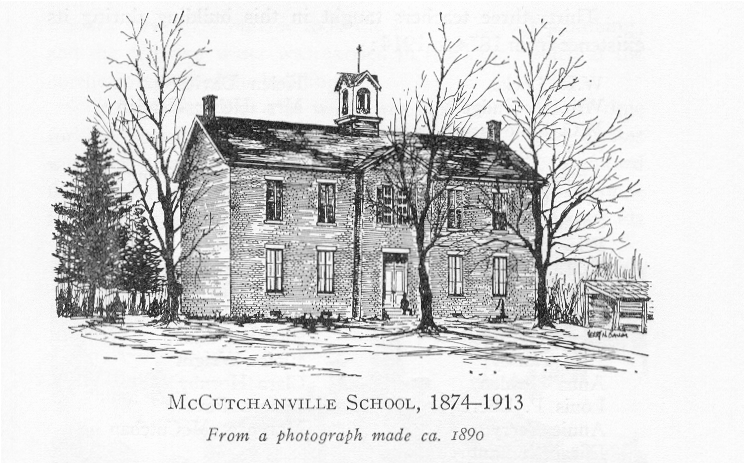
In 1873 work begun on a new, two-story brick building located in “the point” at the junction of Petersburg Road and Whetstone. L.S. Clarke drew up the plans and was paid ten dollars for his service. On the ground floor were two schoolrooms with an entrance hall and stairway between. The second floor was one large room, or auditorium, which became the meeting place of the community for socials, plays, singing bees, etc., for nearly forty years.
One record says the building was completed and first classes were held in it in January 1874. Alexander Perry’s diary says the first day in the new school was February 1st, 1875. By this time the Center Township school system had been organized to the extent that the township was divided into numbered districts. McCutchanville became District No. 3. 33 teachers taught in this school house from 1874 to 1914.
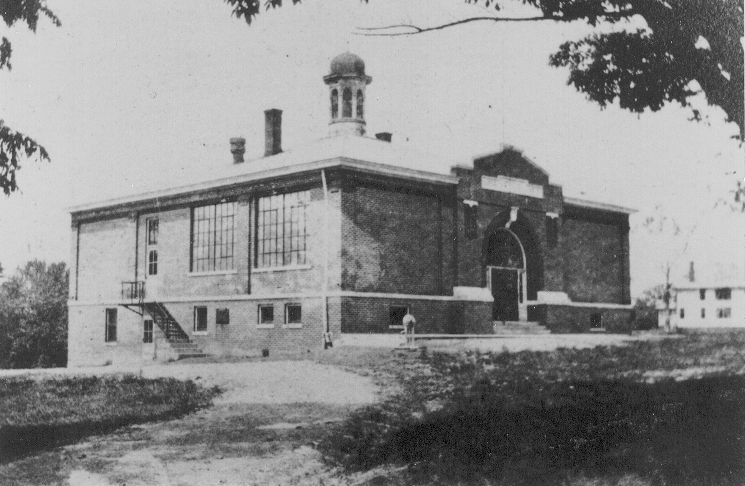
The year 1913 saw construction begun on what is now the old section of the present McCutchanville School. This new structure was located one hundred feet behind the old building, which was demolished. The new one, constructed at an approcimate cost of $18,000 was, of course, the last word in modern schoolhouses in that era. For safety reasons it was constructed all on one floor. There was the central hall with roll-up doors on each side to enclose the cloak and lunch bucket lockers. There were still only two classrooms, but the “hall” or auditorium , was on the same floor and extended the full width of the building on the south side.
The stage, with a roll-up curtain painted with a woodland scene by the late Nelson Wilson, was in the east end of the room. There was full basement with two furnace rooms, one directly beneath each of the classrooms. This was the first time central heating had been used. However, two small gray wooden structures outside took the place of indoor plumbing; and the drinking water was carried in from the cistern at the northeast corner of the building.
In 1918 Center Township schools were consolidated. Number 8 (Kansas School) and Number 7 (Hooker School) were closed and their pupils were transferred to McCutchanville.
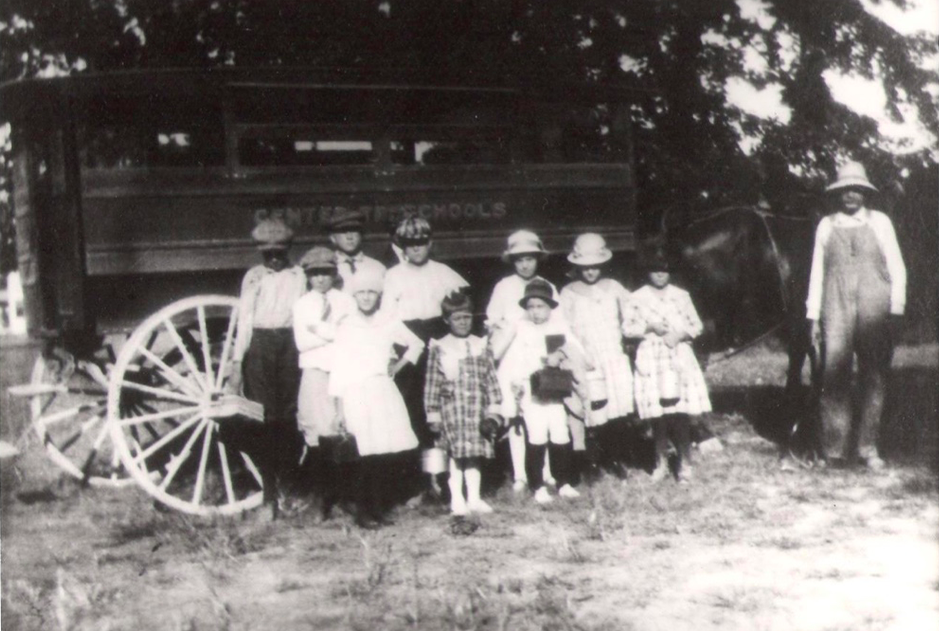
The first year only makeshift transportation was available because the wartime shortage held up delivery of the new buses, but by 1919 two shiney new green wagons went to the road to haul the children. These wagons, driven by Charlie Haas and Alto McCutchan, were the forerunners of the present-day school buses. They were each drawn by a team of horses. In the winter they were heated by a tiny stove suspended beneath the wagon floor, with a stove pipe chimney running up the outside. the seats were merely benches on each side of the narrow center aisle. There were windows the full length of the wagon on each side and a door in the back. Since the bed of the wagon was high off the ground, the back door was reached by several wooden steps suspended in the rear with an iron handrail. Although, by modern standards, it was slow transportation, these school wagons were considered great innovations in their day.
With a consolidation of the schools, a third room was added to McCutchanville. The hall or auditorium became the third classroom. The seats were fastened to runners so they could be moved out quickly and easily when the room was needed for a community gathering. Under this new arrangement the first and second grades occupied the east room. the third, fourth, and fifth the auditorium; and the sixth, seventh, and eight the west room.
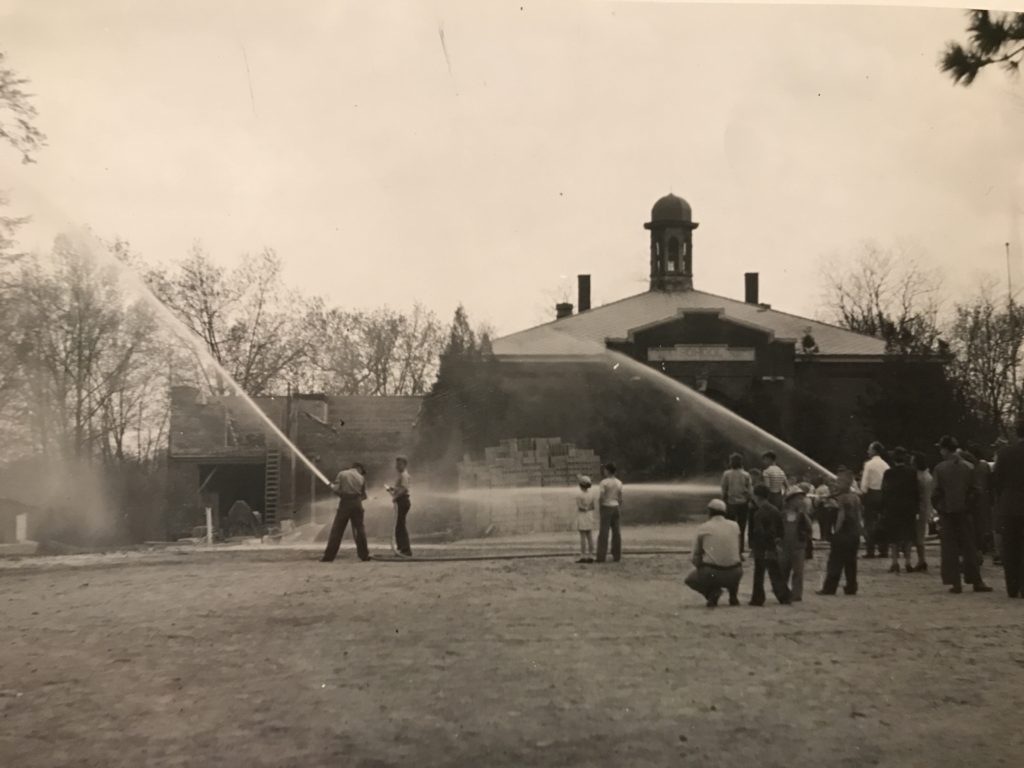
The year 1948 brought, once again, consolidation. This time McCutchanville and Lynch schools became one, after considerable controversy. The McCutchanville buidling was remodeled and enlarged to make five classrooms instead of three, and all pupils from both districts in the third through the eigth grades were enrolled there. The lynch building then became a primary school for all the first and second grades. During the 1949-50 school year a new gymnasium-auditorium was added at McCutchanville.
Early in 1954 a group of citizens purchased twenty acres of land from Mrs. Clara Webb at the corner of Oakhill and Millersburgh roads to be held as a site for the future new school, for there was no room for further expansion at the old McCutchanville site. Three years later, in the spring of 1957, the first phase of the new Oak Hill School was erected on that property. It contained elven classrooms, cost $265,000, and was ready for occupancy by Novmber of the same year. The first five grades were moved into the new building. McCutchanville kept 6th, 7th, and 8th grades, and Lynch became a school for the handicapped.
The next drastic change came about on January 1, 1958, when the old township systems were abondoned and all schools in both the city and county came under the juristiction of the Evansville-Vanderburgh School Corporation. Under the new management further remodeling was done on the McCutchanville building, including the removal of the belfry and bell. Unfortunately, it was not until about a year later at a meeting, that the question came up of where the old bell went. It had been used in both brick buildings since 1874 and reportedly had been acquired form an old riverboat. The EVSC reported that it had been stored in Bosse Field and lost when vandals broke in and stole it.
In 1965 a new addition was begun at the Oak Hill School, including seventeen new classrooms, a library, gymnasium, and auditorium at a cost of $712,785. This was completed and dedicated in October 1966. All grades were then moved into the Oak Hill building, and for the first time in 129 years there was no McCutchanville School. In the spring of 1968 the building was reopened as a center for the government-sponsored Work-Training in Industry program. Classes were initiated in clerical and stenographic work, mechanical drafting, and industrial skills. This program would not stay around for more than a year or two.
In 1970 WNIN began broadcasting from studios created in the old McCutchanville School. One year after signing on, WNIN found itself with $59,000 deficit. A community subscription campaign failed to meet its goal, resulting in the station going off the air in 1972.

In 1982 the McCutchanville Fire Department decided to make a move from the former Swope Hardware Store across the street to the old school. An addition was made to the front of the gymnasium which included a 5 bay station to hold the fire trucks. Inside this structure a watchroom and bunk room would be constructed some years later. The gymnasium was and still is used to rent out to parties or groups looking to play basketball.
